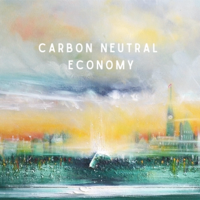A recent study estimates the amount of natural mercury stored in perennially frozen soils (permafrost) in the Northern Hemisphere to be twice as much mercury as all other soils, the ocean and the atmosphere combined. As a consequence of climate change, the permafrost is thawing at higher rates, making the mercury vulnerable to release and thus having major implications in the global mercury cycle.
Arctic biota, especially animals feeding at the tops of food chains - including large predatory fish species, polar bears, seals, whales and birds of prey - are highly exposed to mercury, affecting their diets and revealing high levels of this heavy metal in their tissues and organs.
As some of these are important food sources for local inhabitants, increases in mercury levels might have dramatic consequences to the physical, spiritual and cultural health of the Indigenous communities living in the northern hemisphere. Furthermore, as mercury can travel large distances once released into the atmosphere, this has global consequences, potentially affecting communities and ecosystems thousands of kilometers away.
 Source: John A. Kelley, USDA Natural Resources Conservation, CC BY 2.0.
Source: John A. Kelley, USDA Natural Resources Conservation, CC BY 2.0.
Some measures to reduce the risk of exposure to mercury worldwide are underway, especially now that there is a higher political motivation. 88 countries ratified the Minamata Convention on Mercury (entering into force in August 2017), with efforts to ban primary mercury mines, to reduce its trade and use in small-scale gold mining, as well as to address contaminated sites.
For any solution to be effectively implemented, transdisciplinary collaboration is required, including efforts of environmental scientists, geologists, as well as public health and environmental advocates. Yet, to meet these challenges, innovation and new technologies are expected to play a critical role, discovering novel methods to prevent mercury uptake in wildlife.
It is, therefore, crucial to encourage research in public and private institutions, such as in the chemistry and bioscience communities, to stimulate innovations for sustainable development. A clear example of this is the recent development of a more sustainable technology made by a bioscience company based in Gatineau, Québec. Agrisoma’s jet fuel was developed - with the support of the National Research Council and Agriculture Canada – from the first oilseed (carinata) crop, to be certified as a sustainable biofuel. This new biofuel source produces 77% lower carbon emissions than conventional fossil fuels used in the jet industry.
- Log in to post comments



CRC Comments